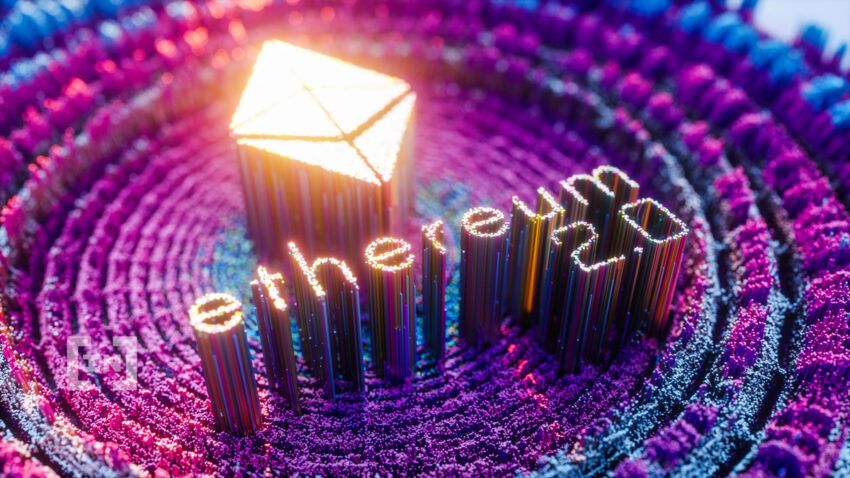The Merge signals a new opportunity for entrepreneurs, creators, builders and contributors, says Megan Au, Senior Corporate Counsel at ConsenSys.
The Merge will resolve major policy issues and garner support across the political spectrum. Ethereum is a transformational technology. But, criticism of the Ethereum network identified a number of shortcomings of the network. The most frequently cited are chain security, energy consumption and an elitist barrier of entry. The Merge will not only transform the network by improving these issues, but also the policy debate surrounding crypto.
The Merge Inflection Point
While the countdown to the Merge has seemingly felt like forever; the Merge is an inflection point and a seamless technical transition that has been planned, developed, and tested for years by Ethereum’s international network of developers. When the Merge successfully executes it will be a tremendous feat.
In this upgrade, Proof-of-Stake (PoS) will supersede the current Proof-of-Work (PoW) consensus mechanism. PoS eliminates Ethereum’s reliance on energy-intensive mining. A considerable amount of noise has been circulating about transaction times and costs making a precipitous drop immediately following the Merge. But that will more likely occur over time and is only one impact of the Merge’s success.
Sustainability through crypto economic incentives resulting in energy efficiency is the priority of the Merge. In future updates, like sharding and rollups, Ethereum will see increased scalability.
PoS will remove the race by miners to complete complex algorithmic puzzles in the PoW method. Instead, a system in which validators, incentivized to play by the system’s rules by staking ETH, are randomly chosen to vote and determine the validity of such a block.
This transition of consensus mechanisms achieves a number of beneficial outcomes:
-Risked capital in the form of staked ETH required as a validator replaces the hardware and energy dependent PoW mining.
-Tempo of confirmed blocks is fixed based on a slot and epoch system rather than dependent on the mining difficulty.
-Penalties for misconduct in consensus are economically exponentially more significant through slashing.
PoS Energy Efficiency
Perhaps the biggest criticism of Ethereum in public policy circles has been its high energy consumption. Currently, PoW consensus on Ethereum requires miners to continuously do “work” at a higher rate and out-mine each other for rewards. This creates an environment of very high energy usage. As Ethereum scaled, extensive mining rigs of supercomputers created sizable energy demands. Energy inefficiency of PoW has been cited as the primary driver for lack of mass adoption and participation by corporate and institutional players.
Critically, Ethereum’s transition to PoS as a result of the Merge, will drastically reduce the energy consumption of the network (less than that of Netflix or the gaming industry). A report
by the Ethereum Foundation, a non-profit research and development organization, estimates Ethereum’s energy usage will decrease by 99.95% following the Merge.
PoS eliminates the arms race of large warehouses for power-hungry mining equipment by utilizing economic incentives and penalties for validator behavior based on their collateralized staked ETH.
It marks the shift from miners’ expending energy capital up front to solve the algorithmic puzzle to validators’ staked ETH as collateral for properly verifying blocks.
Importantly under PoS, when the price of ETH increases the safety of the network also increases, but the energy consumption remains the same. Ethereum, in future updates, will continue to experience additional energy efficiency through sharding and rollups.

PoS Enhances Security of the Network and Assets
Security is the bedrock concern for any system or technology supporting assets, projects and ecosystem infrastructure. Through brute force and sufficient resources, a PoW network could suffer a severe security incident by an attacker(s) taking over at least 51% control of the network.
PoS will increase the security and durability of the network, and by extension, the assets and projects developed thereon, through token economics. The shift to PoS will dramatically increase the cost to attack the network. Similar to PoW, the attack would require at least 51% control of the hashrate of the network to alter the blockchain.
In PoS, though, the 51% attack cost is almost completely prohibitive to execute due to a circular flow of increased staked ETH and ETH price – validators stake more ETH, earn more rewards adding to the staked ETH and the price of ETH goes up. Consequently, achieving 51% of the cost of staked ETH will be incredibly difficult (today for example, the attacker would need at least $15,000,000,000).
There are additional attack vectors but other measures such as finality gadgets, correlation penalties, proposer boosters and attestation deadlines mitigate these malicious activities. Economic finality and crypto economic security improves transaction settlement guarantees. DeFi projects as well as traditional institutional participants will gravitate to networks best capable to store value and prove more secure.
Democratized Access and Egalitarian Method Favored Under PoS
Running a PoW system requires investing in large amounts of expensive hardware and supporting industrial grade computing power. This is in order to complete as many PoW puzzles as possible. It has led to mining warehouses in the race for computing power and limited the opportunity to participate to only those with significant resources to keep up.
Participation under PoS is open to any person or pooled group with 32 ETH to establish a validator. Pooling allows participants with less than 32 ETH to still participate. Pooling mechanics are currently offered by centralized exchanges as well as more decentralized projects such as Lido and RocketPool.
Validators are randomly chosen to be block proposers and/or a member of a block’s validator committee. After properly proposing or validating a block, the validator receives ETH rewards in exchange for their service in establishing and maintaining consensus.
The randomized nature of validator selection, multiple paths to staking and slashing penalties, undermines the high bar of entry required under PoW. This also opens up access to far more participants in PoS. PoS’s egalitarian method lowers resource requirements and decreases compute-intensive requirements for validator nodes and means that each node will have an equal chance at successfully validating the block and thus earning the reward.
The Merge and a New Policy Landscape
The Merge signals a new opportunity for entrepreneurs, creators, builders and contributors to sustainably create value without sacrificing security, energy efficiency and democratized access. It reflects innovation and entrepreneurial values of openness, sustainability and economic reward for productive contribution.
The Merge is an exciting moment for the technical capability and future of Ethereum. It’s also important for the advancement of the policy debate. Following the Merge’s success and solving key disagreements, the policy focus can shift to unresolved critical issues. There will still be ground to cover but the progress crystalized in September is beneficial across the political spectrum.
About the author

Megan Au, is the Senior Corporate Counsel – Products and Strategic Partnerships at ConsenSys. She is admitted to practice law in New York and Washington, DC and is passionate about blockchain technology and its intersection with legacy legal frameworks. Megan, a member of Enterprise Ethereum Alliance since October 2020, currently works at ConsenSys collaborating with teams to launch and develop products built with nascent technology in a compliant manner and navigate a rapidly evolving regulatory environment.
Got something to say about The Merge or anything else? Write to us or join the discussion in our Telegram channel. You can also catch us on Tik Tok, Facebook, or Twitter.
